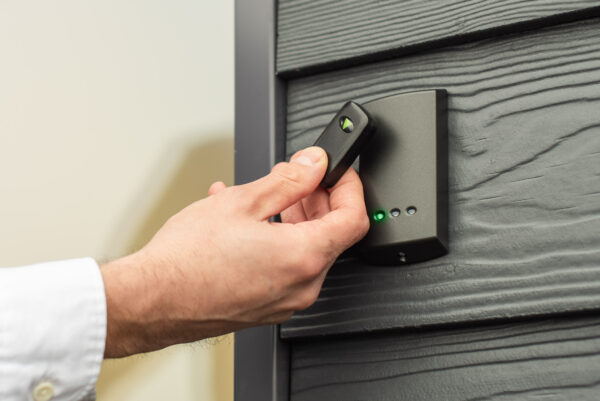
10 Essential Fire Safety Tips for Schools
Fire safety in schools is about more than compliance — it’s about protecting students, staff, and property. Schools are busy environments with unique risks, so having a clear strategy is vital.
At Cobra Fire & Security, we help schools and academies across Hull and East Yorkshire stay compliant with UK fire safety law and keep their communities safe. Here are our 10 essential fire safety tips for schools.
1. Carry Out Regular Fire Risk Assessments
Every school must complete a fire risk assessment and keep it up to date. This ensures hazards are identified, risks are reduced, and fire safety measures remain suitable.
Key checks should include:
-
Identifying fire hazards (e.g., cooking equipment, labs, electricals).
-
Assessing who is at risk (pupils, staff, visitors, vulnerable individuals).
-
Evaluating escape routes and signage.
2. Choose the Right Fire Alarm System
Schools often require Category L systems under BS 5839-1:2025 to provide early warning across all teaching and communal areas. Larger schools may also need phased evacuation or voice alarm systems.
Common system choices:
-
Conventional systems – cost-effective for smaller schools.
-
Addressable systems – pinpoint the activated device; ideal for larger sites.
-
Voice alarm systems – provide clear evacuation messages in noisy areas like sports halls.
3. Maintain Fire Alarms Regularly
A working fire alarm system is non-negotiable. Regular testing and servicing help avoid false alarms and ensure compliance.
Best practice includes:
-
Weekly testing by site staff.
-
Biannual servicing by a competent company.
-
Keeping accurate logbook records.
-
Acting promptly on faults or false alarms.
4. Install Emergency Lighting
Emergency lighting ensures safe evacuation during a power cut or smoky conditions. Schools should test emergency lights monthly and have them inspected by professionals at least annually.
Checklist for schools:
-
Test monthly and record results.
-
Annual inspection by a qualified engineer.
-
Ensure stairwells, corridors, and exit doors are always covered.
5. Keep Escape Routes Clear
Corridors, stairwells, and fire exits must remain free from obstructions at all times. Regular checks are essential, especially in high-traffic areas like canteens or sports halls.
Things to monitor:
-
Keep corridors and staircases free of clutter.
-
Ensure fire doors open fully and aren’t wedged.
-
Carry out regular “spot checks,” especially before school events.
6. Provide Fire Safety Training
Staff should receive fire safety training, and pupils should practice evacuation drills each term. Everyone needs to know where the nearest exits are and what to do in an emergency.
Schools should:
-
Run evacuation drills at least once per term.
-
Train all staff on alarm points, extinguishers, and exits.
-
Provide refresher training for new staff or when systems change.
7. Use Fire-Resistant Materials
From classroom furniture to wall displays, schools should ensure materials meet fire safety standards. This helps slow the spread of fire and gives more time to evacuate.
Practical steps:
-
Choose furniture and displays with fire ratings.
-
Avoid excessive paper or flammable materials in corridors.
-
Regularly review storage of paints, chemicals, and cleaning supplies.
8. Service Fire Extinguishers
Fire extinguishers should be accessible, correctly signed, and serviced annually. Staff should also be trained on how to use them safely.
Requirements include:
-
Annual service by a qualified technician.
-
Correct placement near exits, kitchens, labs, and high-risk areas.
-
Clear labelling and signage for each type.
9. Consider Special Educational Needs
When planning evacuation, schools must account for pupils or staff with mobility, hearing, or visual impairments. Personal Emergency Evacuation Plans (PEEPs) should be in place where required.
Best practice:
-
Develop Personal Emergency Evacuation Plans (PEEPs).
-
Provide refuge points and evacuation aids where needed.
-
Train staff to assist pupils with mobility or sensory challenges.
10. Work With Accredited Professionals
Partnering with a competent fire and security company (like Cobra Fire & Security, SSAIB-approved) ensures systems are designed, installed, and maintained to the highest standard.
Benefits include:
-
Expert system design tailored to your school.
-
Professional installation and commissioning.
-
Reliable maintenance and 24/7 support.
Frequently Asked Questions About Fire Safety in Schools
What fire alarm system do schools need?
Most schools require a Category L system under BS 5839-1:2025, which provides early warning across teaching and communal areas. Larger sites may also need phased evacuation or voice alarm systems.
How often should fire alarms in schools be tested?
School fire alarms should be tested weekly by staff and serviced at least twice a year by a qualified fire alarm company to remain compliant with UK fire safety standards.
Do schools need emergency lighting?
Yes. Emergency lighting is required in all schools to ensure safe evacuation if the mains power fails or smoke reduces visibility.
Who is responsible for fire safety in schools?
The “responsible person” (often the headteacher or site manager) must ensure the school complies with the Fire Safety Order 2005, including risk assessments and fire alarm maintenance.
Reviewed: 07/09/2025 Our articles are reviewed regularly. However, any changes made to standards or legislation following the review date will not have been considered. Please note that we provide abridged, easy-to-understand guidance. To make detailed decisions about your fire safety provisions, you might require further advice or need to consult the full standards and legislation.
Share this article
Written by : Michael Winter
Follow us
A quick overview of the topics covered in this article.
Latest articles
November 28, 2025
November 28, 2025
November 28, 2025









